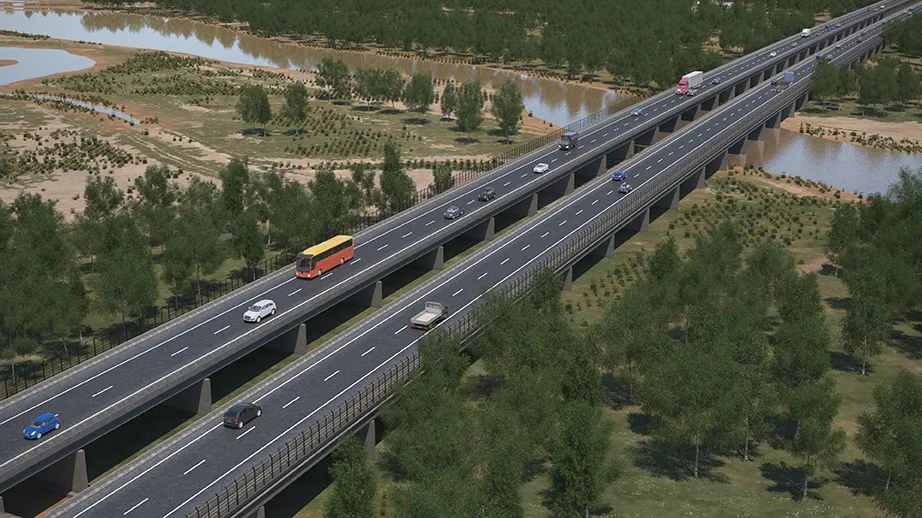According to the latest report from Research and Markets, by the end of 2014, the mileage of toll highways in China amounted to 162,600 km, including 106,700 km of toll expressways, accounting for 65.7per cent; there were 1,665 mainline toll stations on toll highways nationwide, 696.5 of which were the ones on expressways, making up 41.8 per cent. The report, China ETC (Electronic Toll Collection) Industry Report, 2015-2019, claims that by the end of Oct 2015, China had had 25.15 million electronic toll col
January 22, 2016
Read time: 3 mins
According to the latest report from 7527 Research and Markets, by the end of 2014, the mileage of toll highways in China amounted to 162,600 km, including 106,700 km of toll expressways, accounting for 65.7per cent; there were 1,665 mainline toll stations on toll highways nationwide, 696.5 of which were the ones on expressways, making up 41.8 per cent.
The report, China ETC (Electronic Toll Collection) Industry Report, 2015-2019, claims that by the end of Oct 2015, China had had 25.15 million electronic toll collection (ETC) users; except for Hainan and Tibet, 29 provinces across the country had realised the networking of expressway ETC and cumulatively built 12,772 ETC lanes with 98.8 per cent of mainline toll stations equipped with ETC lanes and 89.2 per cent of ramp toll stations with ETC lanes.
The Chinese ETC equipment (OBU, RSU) market size has expanded rapidly in recent years, growing at a CAGR of 33.5 per cent during 2012-2014. With advances in networked ETC nationwide, the Chinese ETC equipment market size is estimated to be up to RMB1.35 billion in 2015, presenting a year-on-year jump of 40.5 per cent.
Companies in ETC industry in China can be categorised into equipment providers and system integrators with the former represented by GENVICT, Juli Science & Technology, Wanji Technology, and ZTE, of which the former three have made their presence in ETC OEM market, and the latter represented by Beijing Yunxingyu Traffic Technology, Anhui Wantong Technology, China TransInfo Technology, ZTE, and China Shipping Network Technology.
GENVICT is a leader among equipment suppliers in ETC industry in China. It had sold more than 5.5 million sets of OBU by the end of 2014, around 40 per cent of OBU stock market. The company has introduced multiple intelligent front-mounted ETC electronic tags, of which ETC rear-view mirror integrated electronic tag is being jointly tested by many companies.
Beijing Yunxingyu Traffic Technology is a corporate champion among system integrators in ETC industry in China. Relying on powerful strength and resources of Beijing Capital Highway Development Group, the company holds a higher share in expressway intelligent transportation market in Beijing and is expected to record revenue of US$220 million in 2015. Sutong Technology, a subsidiary of Beijing Yunxingyu Traffic Technology, is the operator of ETC systems in Beijing and the service agency for networked sorting of ETC systems in Beijing, Tianjin, Hebei, Shandong, and Shanxi. It made a revenue of US$27 million in 2014 and the figure is predicted to be up to US$30 million in 2015.
The report, China ETC (Electronic Toll Collection) Industry Report, 2015-2019, claims that by the end of Oct 2015, China had had 25.15 million electronic toll collection (ETC) users; except for Hainan and Tibet, 29 provinces across the country had realised the networking of expressway ETC and cumulatively built 12,772 ETC lanes with 98.8 per cent of mainline toll stations equipped with ETC lanes and 89.2 per cent of ramp toll stations with ETC lanes.
The Chinese ETC equipment (OBU, RSU) market size has expanded rapidly in recent years, growing at a CAGR of 33.5 per cent during 2012-2014. With advances in networked ETC nationwide, the Chinese ETC equipment market size is estimated to be up to RMB1.35 billion in 2015, presenting a year-on-year jump of 40.5 per cent.
Companies in ETC industry in China can be categorised into equipment providers and system integrators with the former represented by GENVICT, Juli Science & Technology, Wanji Technology, and ZTE, of which the former three have made their presence in ETC OEM market, and the latter represented by Beijing Yunxingyu Traffic Technology, Anhui Wantong Technology, China TransInfo Technology, ZTE, and China Shipping Network Technology.
GENVICT is a leader among equipment suppliers in ETC industry in China. It had sold more than 5.5 million sets of OBU by the end of 2014, around 40 per cent of OBU stock market. The company has introduced multiple intelligent front-mounted ETC electronic tags, of which ETC rear-view mirror integrated electronic tag is being jointly tested by many companies.
Beijing Yunxingyu Traffic Technology is a corporate champion among system integrators in ETC industry in China. Relying on powerful strength and resources of Beijing Capital Highway Development Group, the company holds a higher share in expressway intelligent transportation market in Beijing and is expected to record revenue of US$220 million in 2015. Sutong Technology, a subsidiary of Beijing Yunxingyu Traffic Technology, is the operator of ETC systems in Beijing and the service agency for networked sorting of ETC systems in Beijing, Tianjin, Hebei, Shandong, and Shanxi. It made a revenue of US$27 million in 2014 and the figure is predicted to be up to US$30 million in 2015.









